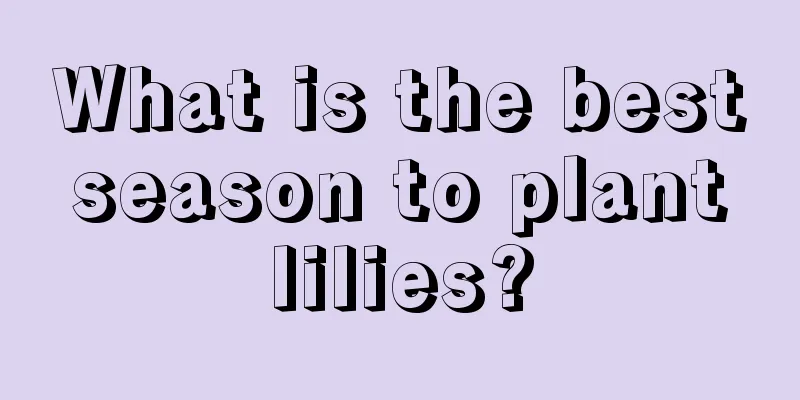How to make pumpkin vines produce more pumpkins (how to manage pumpkin vines to produce more fruits)

|
In the countryside, every family likes to plant a few pumpkins in their own small vegetable garden, because they are easy to manage and bear fruit, and they can eat sweet pumpkins in autumn. In the past few years, some particularly diligent elderly people have reclaimed wasteland and planted other crops, such as corn, beans, cucumbers, etc., but they also planted a few pumpkins. Maybe it’s because many people like to eat pumpkins? How to manage pumpkin vines to produce more pumpkinsPumpkin is a kind of melon vegetable commonly grown by many farmers. Compared with other melons, pumpkin is easy to manage, easy to survive, and does not have strict requirements for the soil environment. However, if you want to grow pumpkins well, produce abundant fruits and high quality, you also need to master some experience, among which plant adjustment is very important. Pumpkin seedlings should be raised in early April and transplanted in early May . In order to ensure that the pumpkin does not run away and bears more fruits, the planting time should be well controlled. It takes about five months from planting to harvesting to ensure that the melons have good taste and are easy to store. Generally, they can be stored for 3 months at room temperature of 15℃. To grow pumpkins well, we need to prevent the vines from growing too tall, so the planting density should be reasonable , and the spacing should be kept at 50 cm to ensure that the vines are exposed to the wind and light, which can increase the fruit setting rate. If the spacing is too dense, it will cause the vines to grow too tall, the stem nodes will be too long, and the yield will decrease. In order to ensure that the pumpkin does not run away and produces more fruits, and also to ensure that the pumpkin tastes sweet and sticky, more potassium fertilizer and less phosphorus fertilizer and nitrogen fertilizer should be applied. The taste determines the important factor. If the taste is not good, the pumpkin will be greatly discounted, and fewer people will buy it, which will also reduce the profit. The growth of pumpkin seedlings should also be controlled in time according to the soil and fertility conditions. Generally, pumpkin seedlings can grow to 7 to 8 meters long if they grow freely. However, in order to make the pumpkin grow bigger, do not waste nutrients. Prune the seedlings when they are about 2 meters long to prevent them from growing too tall. Some farmers said that they planted a few pumpkins and found that the plants grew very well and had many side branches. In this case, do they need to remove the side branches? If a pumpkin grows side branches, it means that the vegetable is growing well and is not lacking in water and fertilizer. However, if side branches continue to grow, it also means that the vegetable is growing too vigorously and after the fruit sets, the fruit will grow slowly, be small in size, and the yield will decrease. When pumpkins are planted in a creeping manner, both the side branches and the main vines are allowed to grow freely and are rarely managed. For this type of vigorous growth, the branches and leaves cover each other, and some side branches can be removed appropriately to improve ventilation and light conditions, promote rapid flowering and fruit setting on the main vine, and concentrate nutrients on the fruit. When picking side branches, you should also choose according to the pumpkin variety. If you plant a large number of trees, you can only leave the main vine to bloom and bear fruits. We need to remove all the side branches and concentrate the nutrients on the flowering and fruiting of the main vine, and then pollinate and set fruit. If there are too many side branches, nutrients will be dispersed and ventilation will be poor, which will also affect the growth of the pumpkin. Therefore, for pumpkins planted on the ground, the side branches need to be removed if they grow too vigorously. There are also some new varieties of pumpkins whose seeds are expensive and the number of trees planted is small. In this case, a single vine cannot meet the production demand, so you can leave more side branches to bloom and bear fruit. That is to say, choose two branches with similar growth and strong growth to bloom and set fruits. If the flowers bloom in the same way, it will be more convenient and less troublesome to manage. Generally, when the main vine grows to five to seven internodes, two side branches are left at the bottom and the rest are removed. However, there are some pumpkins that grow relatively weakly, with only a few leaves, few side branches, and thin stems. You can leave some side branches. After pinching the main vine, use the side branches to bloom and fruit to increase the number of pumpkins . In this case, you don't need to pinch the side branches, but you need to add fertilizer appropriately, and you can add phosphorus and potassium fertilizers. Whether to pick the pumpkin side branches or not depends on your planting situation. For example, if some pumpkin varieties are good and farmers want to grow high-quality pumpkins, they can sell one kilogram of pumpkin for more than ten yuan. For this type of fruit, which does not require high yield but requires high quality, single vine pruning may be used, removing all other side branches and leaving only one melon on a tree. Therefore, pruning should be determined according to the variety and planting conditions. When planting in a small vegetable garden, even if you don't cut side branches, the pumpkins produced will be enough for consumption. After all, pumpkin is not a staple food. When planting on a large scale, the price of some new varieties of seeds is high, and we also need to consider the time to mature and go to market, labor costs, and the cost of watering and fertilizing. The cost is relatively high. We need to have high yields and commercial quality to avoid losing money. Therefore, we cannot neglect pruning management. |
>>: How to grow onions quickly (how to make potted onions grow quickly)
Recommend
The difference between millstone grass and ramie
1. Leaf Difference The leaves of the grinding whe...
How to make your own fertilizer for hydroponic green radish
1. Prepare nutrient solution 1. First, find an ab...
What flowers are suitable for growing in Liuzhou? What are the city flowers and trees?
1. Climate characteristics of Liuzhou Liuzhou has...
How to propagate Elsholtzia
1. Seed propagation: 1. First of all, you must en...
The efficacy and function of rattan Panax notoginseng
effect: The primary effect is that it can nourish...
What are the cultivation methods and precautions of Cuilan?
Green orchid cultivation method Cuilan, also know...
What flowers are suitable for growing in Huanggang? What are the city flowers and trees?
1. Climate characteristics of Huanggang Huanggang...
Does Orange Ice Bougainvillea bloom frequently?
The color of the Orange Ice Bougainvillea is very...
Can I grow pepper trees at home?
Can I grow pepper trees at home? You can plant pe...
What to do if the leaves of Margarite turn yellow
1. Improper watering 1. Reduce watering Although ...
Does the rubber tree like water or drought?
Do rubber trees prefer moisture or drought? The r...
What to do if the leaves of white palm turn black
1. Control watering Anthurium likes slightly mois...
How to care for newly bought black heart chrysanthemum
1. Lighting Rudbeckia loves light, but for newly ...
How to prune the roots of agave
Does Agave need root pruning? Agave needs root pr...
Ginger flower cultivation methods and precautions
1. Temperature It prefers a growing environment w...









